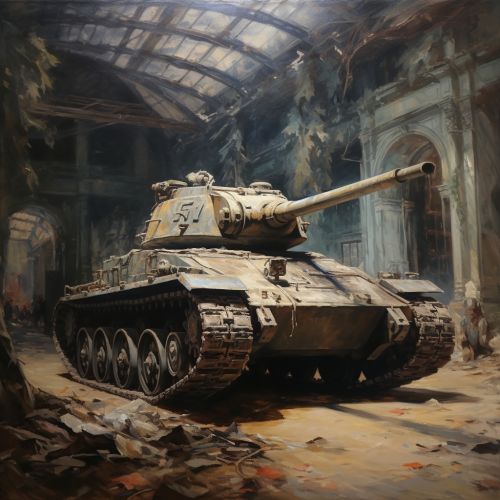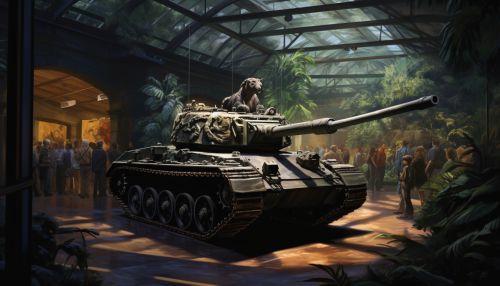Tiger I
Development
The Tiger I, officially known as the Panzerkampfwagen VI Tiger Ausf. E, was a German heavy tank developed and used during World War II. The tank was designed in response to the emergence of heavily armored Soviet tanks on the Eastern Front. The Tiger I was first produced in 1942 and saw service until the end of the war in 1945.


The development of the Tiger I began in 1937 when the German High Command (Oberkommando des Heeres) issued a requirement for a heavy tank capable of breaking through enemy defenses and destroying enemy tanks. The design was awarded to Henschel & Son, a German engineering company, who produced the first prototype in 1942.
Design
The Tiger I was a breakthrough in tank design, featuring a powerful 88mm gun and heavy armor that was almost impervious to most anti-tank weapons of the time. The tank was powered by a Maybach HL 210 P45 V-12 petrol engine, which provided a top speed of 38 km/h (24 mph) on road and 20 km/h (12 mph) off-road.
The Tiger I's armor was up to 120mm thick in places, making it one of the most heavily armored tanks of the war. The tank's main weapon was the 88mm KwK 36 L/56 gun, which was capable of penetrating the armor of any Allied tank at ranges of up to 2,000 meters.
Production
Production of the Tiger I began in August 1942 and continued until August 1944. A total of 1,347 Tiger I tanks were produced during this period. The production process was complex and time-consuming, with each tank requiring over 300,000 man-hours to build.
Combat Service
The Tiger I saw extensive combat service on all fronts where the German Army was engaged. The tank's heavy armor and powerful gun made it a formidable opponent, but its high production cost and mechanical unreliability limited its effectiveness.
The Tiger I made its combat debut in September 1942 on the Eastern Front. The tank's performance in combat was impressive, with Tiger I tanks often accounting for a disproportionate number of enemy tank kills.
Legacy
The Tiger I left a lasting legacy and is often considered one of the greatest tanks of World War II. Despite its flaws, the tank's heavy armor and powerful gun set a new standard for tank design that influenced the development of post-war tanks.
